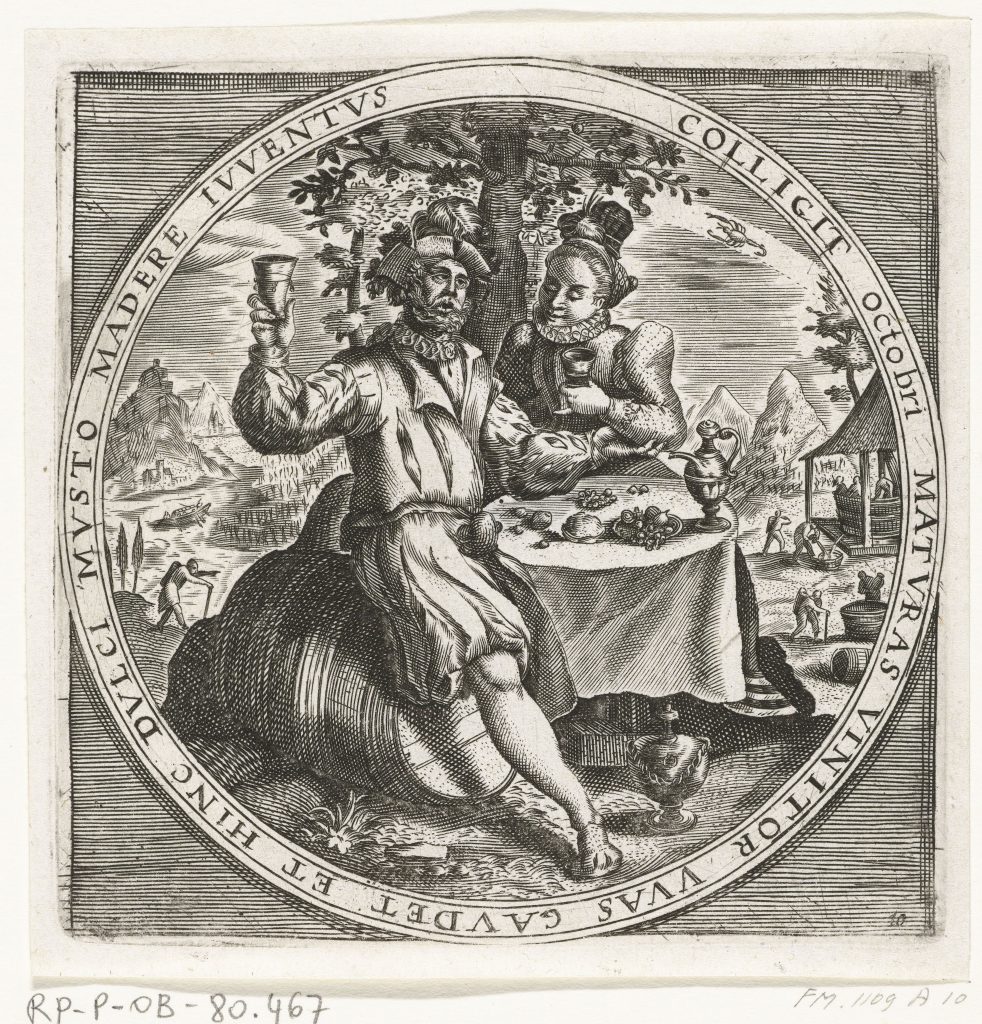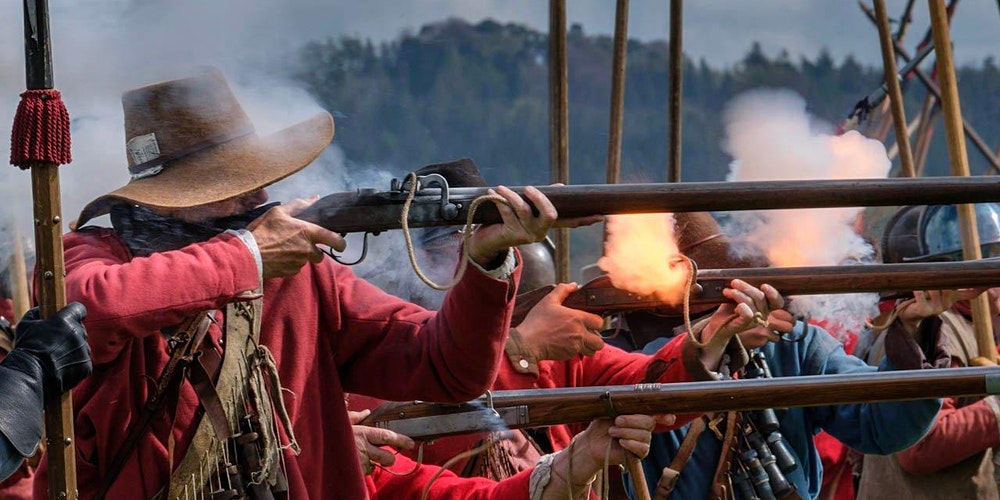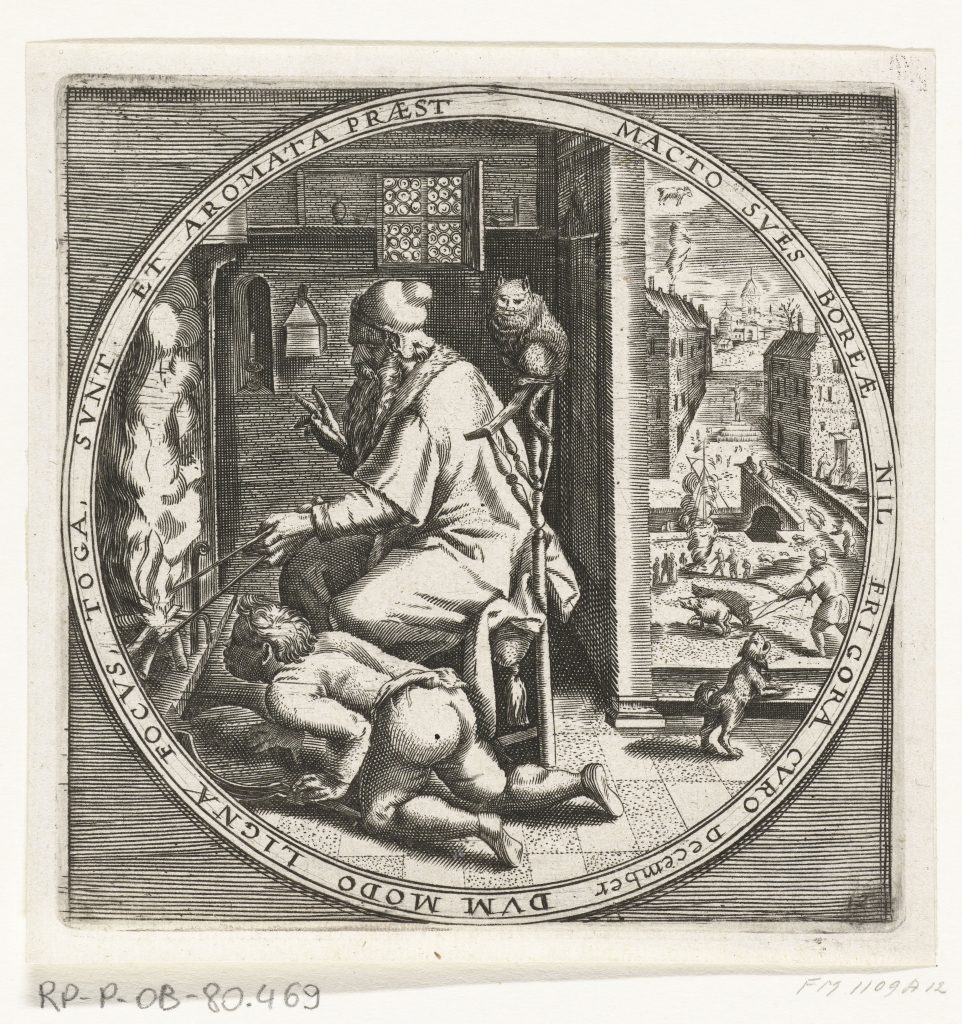
17th Century Almanac for January
The 17th Century almanac for January – when ‘withering and keen the Winter comes, while comfort flies to close-shut rooms.’ It is January and a new year. It is 2024. But we once marked our days and years in a different way.
Julian Calendar & New Year
In the 1640s, for most people in England, Ireland, Wales and the colonies, the new year started on the 25th of March. Although Scotland and many in Europe celebrated on the 1st of January, the Gregorian Calendar was not officially adopted across Britain until 1752. To confuse matters further, the Catholic Church clung to the very old idea of the new year starting on Christmas Day, until 1910. Today, we mark historical dates between the 25th of December and the 25th of March with both years – OTD 380 years ago it was the 1st of January 1643/44 (Gregorian Calendar).
For most in the 17th Century, January marked the end of the twelve days of feasting at Christmas. Whether rich or poor, Christmas was the time when any remaining fresh food that would not keep through the winter was eaten. This included any cows, pigs and poultry that could not be kept in the barns or cottager’s croft. There was rarely more than enough winter feed to keep the breeding stock for the next year. Unless meat could be smoked or salted to preserve it, it was eaten at Christmas. Any excess was shared with hospitality. Traditionally, those who could, fed, hosted and entertained the many who had less. All aimed to pack in enough calories to get them through the months of want that would follow.
17th Century Life & Plough Monday
January the 5th (Gregorian Calendar) was Twelfth Night, marked with wassailing and ashen faggots in the West Country, and misrule in most places. January the 6th was Twelfth Day, the last day of Christmas and a day to sober up. We tend to forget that in the 17th Century the day still ended at sunset, not at midnight. We still talk of Christmas Eve and Christmas Night coming before Christmas Day. Similarly, New Year’s Eve is followed by New Year’s Day. These are the last vestiges of the way we used to mark the day before mechanical time replaced an older, natural rhythm.
January marked a return to hard, laborious work for most. January the 7th was Saint Distaff’s Day, when women retuned to the spinning wheel or distaff. The first Monday after Twelfth Day was Plough Monday and a return to labouring in the fields. January was the time to muck out and dung the fields. This was done whilst the frosted ground was hard enough to support cartwheels. With this went clearing the fields of stones, clods and weeds.
January was also a time to lop or pollard trees. Hewers and bodgers turned the wood into frames for building, staves and spindles for implements. Our woods were once factories of industry turning out the essentials of life. They are now but a quiet shadow and place of solitude. The kept cattle were fed and bedded in barns, and let out to exercise and scratch in the yard or croft once per day.
The Wolf Moon
Even in the depths of winter, the moon dictated farming, fishing, medicine and so much more in the 17th Century. If you can, don’t forget to pay your respects to the new moon that rises on the 11th of January. This will be a full Wolf Moon on the 25th. This may sound like a native American name for a moon, but it is in fact the medieval term that was still used in England in the 17th Century.
I hope your Christmas and New Year were both plentiful and restful. I hope you feel ready to face Distaff Day, Plough Monday and the months ahead. Whether you are spinning woollen thread, or labouring in the barns and fields, I wish you a happy and prosperous 2024.
I am hugely grateful for all the support, fantastic reviews and brilliant memories over the last twelve months. It has been another extraordinary year. Thank you!
Follow & Read More
I will post more of the 17th Century Almanac and yearly activity in Early Modern Britain, next month, for February. If you would like to receive an email notification of the next post, click the button to follow.
In the meantime, this website includes more posts and articles about life in 17th Century Britain, Europe and the Americas at Historical Notes and Maps. These include notes and pages on the impact of the Little Ice Age and The General Crisis of the 17th Century. They include articles on the English Revolution and Great Rebellion. They also include Pike and Shot Warfare and battles of the English Civil War.
You can also find more posts on Early Modern history, Living History and re-enactment at News & Events. You may also wish to read about the English Civil War history talks and battlefield walks I give.
See More & Share
Alternatively, check out Facebook, Instagram, Twitter or YouTube for more posts. These include notes from my historical research, Living History and English Civil War fiction. They also include upcoming events and opportunities to meet. Or, follow on social media at #DividedKingdomBooks or #EnglishCivilWarFiction on:
If you want even more, join us in the Divided Kingdom Readers’ Club. Clubmen receive FREE access to exclusive short stories, email and more. Click the link to sign up and join us.
Spread the Word
If you like what you see, please click, share and spread the word via email or your social media on:





